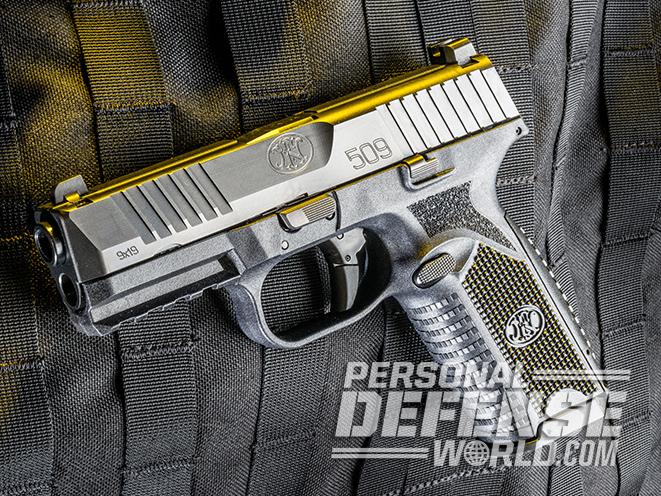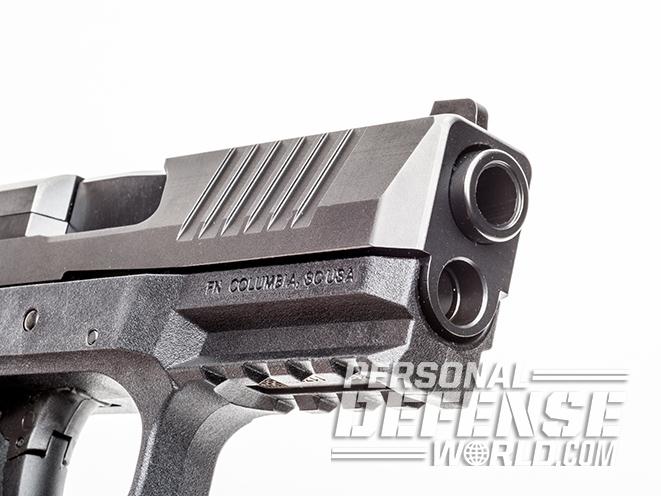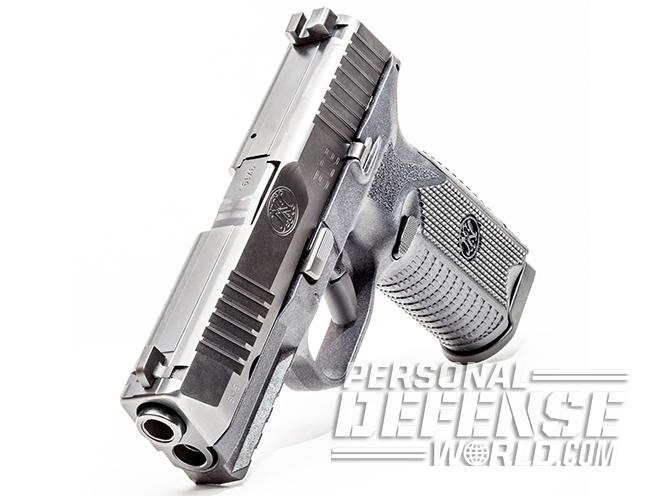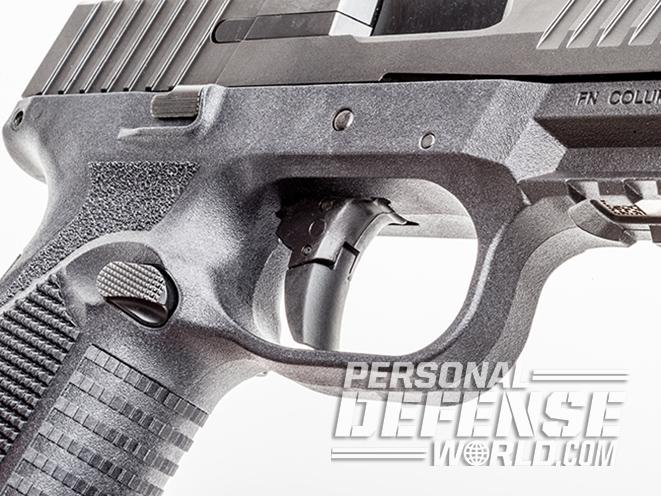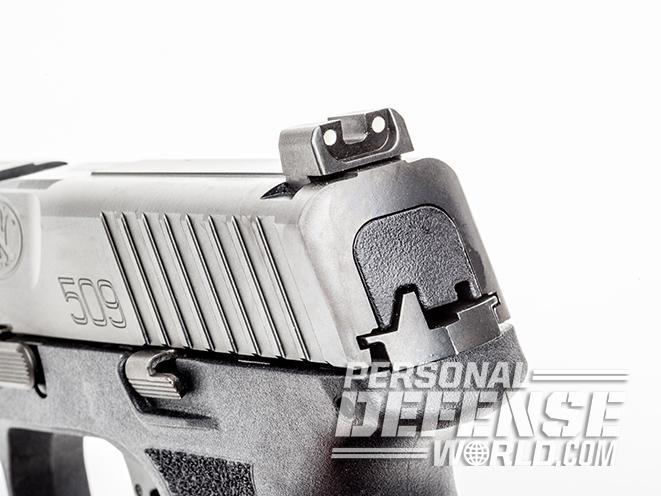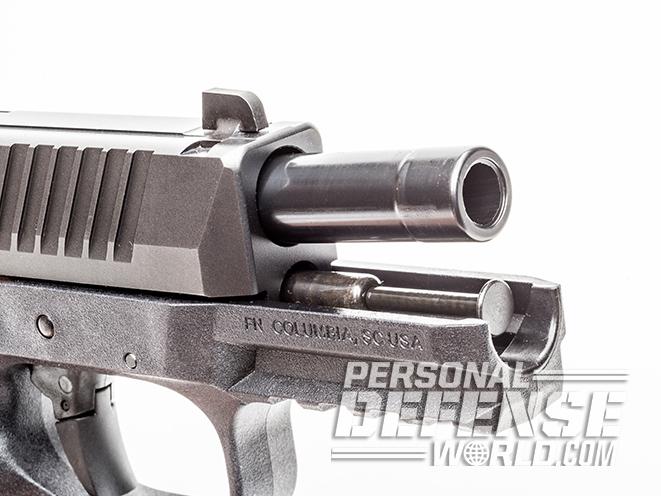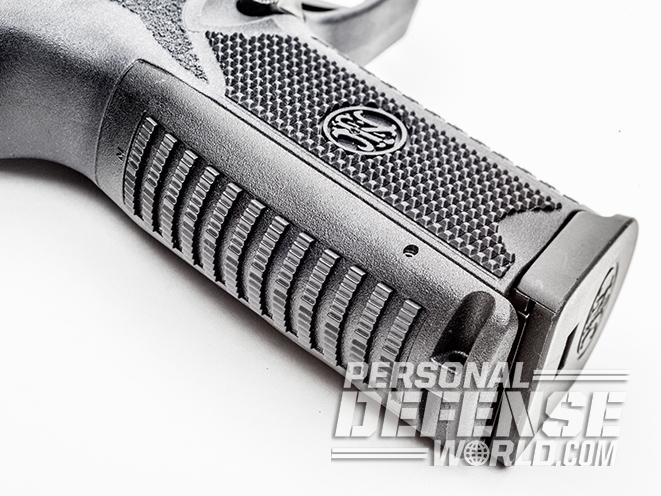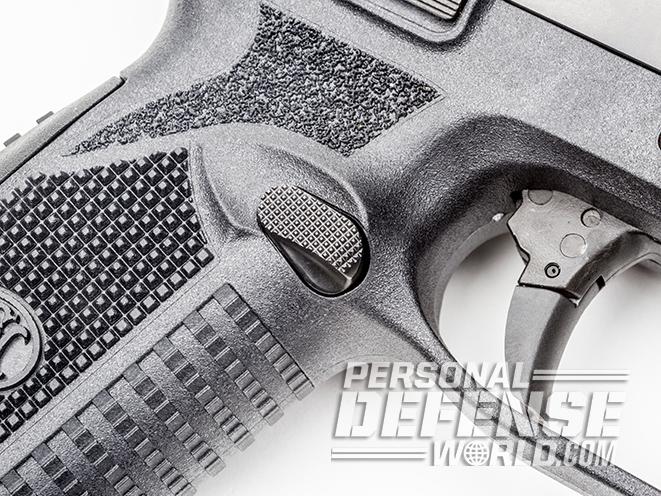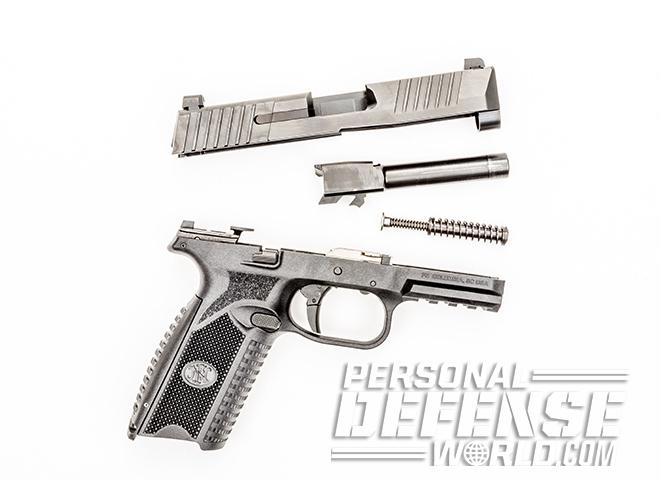In mid-2015, the U.S. Army issued a request for proposal (RFP) for a new Modular Handgun System (MHS) to replace the aging Beretta M9 pistols that have been in service since being adopted in 1985. The full and open competition solicited test pistols from major manufacturers designed to “provide warfighters with a best-value system that features increased lethality, increased accuracy, improved ergo-nomics and a higher degree of reliability over the legacy handgun systems.”
The prestige of being named the winner is undeniable. However, the commercial aspect of this equation is what drives most manufacturers to invest in research to develop a weapon for the RFP and subsequent trials. With a decade and a half of near-constant combat in two different countries, the Army had a long list of specifications that the gun, codenamed the XM17, had to meet to be considered for adoption. Understandably, most companies didn’t have an off-the-shelf solution to the criteria posed, necessitating the development of new pistols.
Advertisement — Continue Reading Below
How the FN 509 Came to Be
FN has a long and rich history of supplying weapons to the United States military. From the M16A4 to the M249 SAW, to the 5.56mm and 7.62mm SCAR systems, to the MK19 belt-fed grenade launcher, FN has provided several quality weapon systems for our fighting men and women. In addition, the company was already manufacturing a polymer-framed, striker-fired pistol—two of the major criteria for the next XM17. The gun FN developed to meet the specifications of the Army’s RFP is now known commercially as the FN 509.
The starting point for this new pistol was the FNS Compact—a striker-fired, polymer-framed pistol. This gun provided the basic architecture. During its development, FN made changes to the frame, barrel and slide. Meanwhile, FN completely redesigned other components to meet the requirements for increased reliability, accuracy and ergonomics.
Not wanting to place all of its eggs in one basket, FN also started an extensive survey looking for feedback that would also help the company develop the FN 509 as a duty gun for law enforcement. Ergonomics tended to be one of the top considerations for both military and police agencies. Given the size differences among personnel, the ability to provide one gun that is comfortable to use for those with small and large hands alike was a daunting challenge.
Advertisement — Continue Reading Below
Hands On
My evaluation sample of the FN 509 came with three different backstraps, and they can be interchanged by simply pushing out the retaining pin, sliding the backstrap off the frame, installing a different one and reinstalling the pin. The sides of the grip frame feature sharp pyramid-style checkering to provide a rock-solid grip even when wet. Above the pyramidal checkering is a texture similar to skate tape, while the front- and backstraps have what FN calls “Dragon Scales.” These three different styles of texturing should provide an excellent grip even when used with gloves.
There are a number of other frame features that I found particularly favorable. The tang or beavertail area of the gun is well designed and proportioned to protect the hand from being bitten by the reciprocating slide. Subtle polymer fences around the slide and magazine releases as well as the takedown lever prevent inadvertent activation of any of these controls. FN also elongated the triggerguard, making the pistol safer to shoot while wearing gloves. The extra-large triggerguard also presents an excellent opportunity for holster makers to use the forward portion of the guard opening to create a friction lock.
The frame’s dust cover sports a Picatinny accessory rail for use with any number of light/laser accessories.
Advertisement — Continue Reading Below
The slide’s cocking serrations are deeper and cover a great deal of surface area, both fore and aft; this provides the user a more positive grip when charging the chamber or unloading the pistol. FN engineers also included an external extractor that pulls double duty as a visual and tactile loaded-chamber indicator.
FN has designed the 509 to be ambidextrous, and it features bilateral slide stop levers and magazine releases. Looking through the 509’s owner’s manual, it appears that additional models will be released with a manual safety. My sample did not possess such a safety.
FN engineers did, however, manage to include four passive safeties in the 509’s design. There is a striker block that prevents the striker tip from protruding through the breech face unless the trigger is pulled. The drop safety prevents the sear from moving out of engagement with the striker unless the trigger is deliberately pulled, and the trigger disconnect safety is actuated when the disconnect cam is pushed out of alignment with the sear, preventing it from releasing the striker. This prevents the gun from firing when the slide is out of battery.
Advertisement — Continue Reading Below
Looking at the pictures, you’ll see what appears to be a pin at the middle of the trigger’s profile. Like many of the other current generation of striker-fired guns, the FN 509 has a trigger safety that blocks rearward movement of the trigger unless it is purposefully pulled. This prevents inertia movement of the trigger if the gun is dropped on its muzzle.
The trigger pull on my test sample weighed in at about 7 pounds. The spec sheet for the 509 lists the trigger pull as ranging from 5.5 to 7.5 pounds; this pull weight likely was specified by the Army. It will most likely find favor with assorted police agencies who would view a lighter trigger pull as a liability.
FN has quite a reputation for its barrels. The 509 uses a cold-hammer-forged barrel with a polished chamber and feed ramp. In an unusual move, FN machines the barrel with a recessed target crown not unlike what we would see on a high-dollar precision rifle. While FN literature claims that this helps each bullet stabilize as it leaves the muzzle, I think the best benefit is that it protects the rifling in the event the pistol is dropped.
Advertisement — Continue Reading Below
Raining Lead
To test the FN 509’s accuracy, I set up targets at 25 yards and fired five-shot groups from a bench utilizing a Millett BenchMaster for support. I like the gun’s sights—they are tall enough to present a clear and bold sight picture. They possess luminescent dots arranged in the usual three-dot pattern, and the rear sight’s profile allows for one-handed slide manipulations using your belt or shoe or whatever is handy. After firing my first group, I was easily able to drift the rear sight in its dovetail to correct for windage.
I have to admit that, on more than a few occasions, I started the trigger press and released it several seconds later before breaking the shot. As you can imagine, a 7-pound trigger pull is not very conducive to bench shooting. But, despite the trigger pull, I was impressed with the FN 509’s results.
Advertisement — Continue Reading Below
DoubleTap’s 77-grain hollow points produced the highest velocities as well as the best five-shot group, which measured just over an inch. On top of this, the little rockets generate over 400 foot-pounds of energy (fpe); this makes it a great choice for self-defense work. During the evaluation, I tried every bullet weight from 77 to 150 grains, all with very different bullet nose profiles and overall lengths. They all worked flawlessly in the FN 509. FN ships the gun with two 17-round magazines or 10-round magazines where restricted.
The felt recoil seemed lighter with this gun than I am used to with a polymer-framed 9mm. I credit the excellent ergonomics of the 509’s grip. The diameter of the grip seems smaller, and its angle is similar to a 1911’s. It also has a low bore axis, but what I think accounts for most of its light felt recoil is its dual recoil spring assembly. It features a small, tightly wound spring around the recoil spring guide, and a larger spring is wound over a cap that slides over the guide rod and its smaller spring. The cap prevents any spring-to-spring contact and makes for very smooth slide reciprocation.
Takedown & Takeaway
Any military weapon needs to be easily disassembled, and the FN 509 is no different. After ensuring the gun is completely unloaded and the magazine removed, lock the slide to its rearward position. Now rotate the disassembly lever downward. Grasp the slide, depress the slide stop and ease the slide forward. With the pistol pointed in a safe direction, pull the trigger and pull the slide and barrel forward off the frame. Turn the slide upside down and remove the recoil spring system. The barrel can now be lifted from the slide. This is as far as the manual recommends for disassembling the gun; it should be enough for routine maintenance and cleaning. Reassembly is in the reverse order. It is an uncomplicated process that could be performed in complete darkness without much problem.
Advertisement — Continue Reading Below
As I write this, the Army has selected a variant of the Sig Sauer P320 as the new XM17 MHS, and Glock has filed a protest with the Government Accountability Office, effectively placing the program on hold until it is resolved. In any event, the Army did not select the FN 509. While I haven’t been made privy to their testing and selection process, I found the FN pistol to be of sound design and performance with great ergonomics and accuracy. Those looking for a service-style, polymer-framed semi-auto pistol should definitely give the FN 509 a look!
For more information, visit fnamerica.com.
FN 509 Specs
- Caliber: 9mm
- Barrel: 4 inches
- OA Length: 7.4 inches
- Weight: 26.9 ounces (empty)
- Grip: Polymer
- Sights: Three-dot luminous
- Action: Striker-fired
- Finish: Matte black
- Capacity: 17+1
- MSRP: $649
